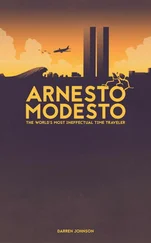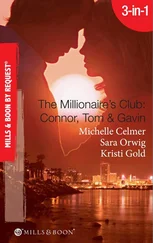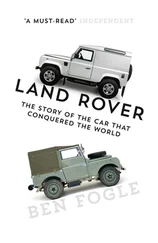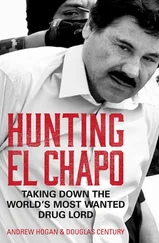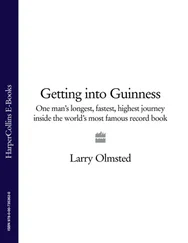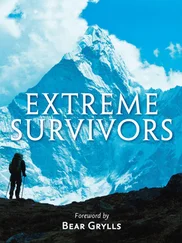The third tour was again to South Africa, which could be reached in 16 to 17 days by boat rather than the 6 weeks it took to sail to Australia or New Zealand. Well organized and funded by the various provincial unions across South Africa, the 1896 tour was memorable for several reasons—it featured a sizeable contingent from Ireland for the first time, it included the first defeat of the Lions in an international Test, and the whole exercise officially made a profit, showing that the Lions were by now welcome visitors wherever they went.
The touring party featured players only from English and Irish clubs and was missing those players from the northern English clubs who had ‘defected’ to rugby league on its formation in 1895. The choice of players for touring also reflected the massive infighting that had split the RFU from the SFU—the name Scottish Rugby Union was not adopted until 1924—and the Welsh Union over issues related to professionalism.
The squad was captained by Johnny Hammond of Blackheath and Cambridge University, who at 36 was the oldest Lions captain to date. Irish vice-captain Tom Crean, already an internationalist with nine caps, actually led the side on more occasions, age presumably having withered Hammond. Though we will learn more about his heroic nature, Crean, it should be said, must not be confused with his contemporary fellow Irishman of the same name, who accompanied both Scott of the Antarctic and Ernest Shackleton on their Polar expeditions. One of the Lions tourists, Cuthbert Mullins of Oxford University, was actually a native of South Africa, and he later went back home to practise as a doctor.
It is perhaps an insight into the inclusive nature of the Lions as representing all of Britain and Ireland that, on arrival in South Africa, the three Roman Catholics in the party—Crean, and Louis and Eddie Magee—wanted to attend Sunday mass rather than take part in an excursion. The management decreed that all religious people would be able to attend their various churches that morning and the excursion would start later. The Lions, it seemed, happily answered to a Higher Power.
That Power looked kindly on them. The Lions went undefeated through the tour until the final game. They had beaten South Africa in three Tests, and won against every provincial side except one, Western Province, which gained a 0–0 draw. They had scored 320 points for the loss of 45, yet such apparently one-sided statistics hid the fact that South African rugby had vastly improved.
In their final match in Cape Town, the Lions found out just how much the sport had moved on in South Africa. Wearing their famous green jerseys for the first time, South Africa were led by Barrie Heatlie, who rejoiced in the nickname ‘Fairy’—it is not known why. His side had developed their forward play to such an extent that the Lions buckled, and when the referee, Alf Richards, who just happened to be a former South African internationalist, ruled against the Lions’ favourite tactic of wheeling the scrummage, things began to look bad for the visitors.
South Africa then gained a controversial try, not least because the scorer, Alf Larard, had been reinstated as an amateur on immigrating to the country from England where he had been involved in the row over ‘broken time’ payments which had led to the establishment of rugby league the previous year. Also, by a strict interpretation of the rules, the ball had been won from an offside position before being passed to Larard for his try, which was converted.
The visitors mounted a late rally, but could not score. South Africa had beaten the Lions 5–0, and the victory caused a sensation across that country. The row over the debatable score rumbled on for days, and some would say has never stopped, as the northern hemisphere and southern hemisphere nations still disagree over the laws of the game and their interpretations.
We are indebted to Walter Carey, one of the tour party, for an insider’s account of the 1896 tour. He would eventually make his home in South Africa as Bishop of Bloemfontein and is most famous for coining the motto of the Barbarians: ‘Rugby is a game for gentleman in any class, but no bad sportsman in any class.’
Carey wrote that the tour had been ‘very happy’ and praised the ‘scrupulously fair’ play of the host teams. He added: ‘I hope and pray that South African teams will always play like gentlemen.’ His missionary zeal is perhaps understandable, given that he did become a clergyman.
Carey also described the tour’s star player Tom Crean in glowing terms as ‘the most Irish, the most inconsequent, the most gallant, the most lovable personality one could ever imagine and made the centre of the whole tour’. Over the years the Lions have featured many such personalities, and a goodly number of them have been Irish.
Sadly, within a few years of that happy tour in 1896, South Africa was torn apart by the Boer War. It seems almost incredible that so soon after their tour as Lions, several of the 1896 touring party were back as combatants. Two of them, Tom Crean and Robert Johnston, both won the Victoria Cross for acts of gallantry in that conflict—it was not just on the rugby battlefield that Lions were heroic.
Crean in particular appears to have been practically born heroic. Blessed with good looks and a magnificent physique, Crean was what the Irish call a ‘broth of a boy’, who loved nothing better than good wine, good company of both sexes and plenty of singing. In short, an ideal Lions tourist. From Dublin, he had just qualified as a doctor in 1896 and he had already been decorated for heroism. At the age of 18, he received a Royal Humane Society award for saving the life of a 20-year-old student who had got into difficulties in the sea off Blackrock in Co. Dublin. He enjoyed South Africa so much he stayed on in Johannesburg and, in 1899, joined up as an ordinary trooper, seeing action at the Relief of Mafeking and being wounded in battle.
Serving as a surgeon captain in 1901, Crean won his VC for continuing to attend to the wounded under fire. Presented with the medal in 1902 by King Edward VII, his citation read:
Thomas Joseph Crean, Surgeon Captain, 1st Imperial Light Horse. During the action with De Wet at Tygerskloof on the 18th December 1901, this officer continued to attend to the wounded in the firing line under a heavy fire at only 150 yards range, after he himself had been wounded, and only desisted when he was hit a second time, and as it was first thought, mortally wounded.
As if that wasn’t enough, Crean went on to win the Distinguished Service Order and commanded the 44th Field Ambulance brigade which served in the trenches in the First World War. He was again wounded several times.
Sadly, his health failed as a result of his wartime injuries, and he began to drink heavily and developed diabetes. His private practice in London failed, and he was declared bankrupt shortly before his death in 1923, aged just 49. You will read in this book of how life after the Lions has often been an anti-climax for individual players, but that could not be said of war hero Crean.
It was said at one time that the two most famous men in South Africa were Cecil Rhodes and Tom Crean. Crean’s heroism as a player and in combat were not forgotten—in the third of their special Boer War centenary commemorative stamps issued by the South African Post Office in 2001, he was one of two people honoured with their own stamp.
Amazingly, the other Lion to win a VC, Robert Johnston, was a member of the same club as Crean, Wanderers. Born in Donegal, Johnston celebrated his 24th birthday on the Lions tour and he and Crean became fast friends. Indeed, they joined the Imperial Light Horse together, and served through various battles including Elandslaagte. It was there that Johnston won his VC. The citation read that at a critical moment when the advance was checked, Johnston ‘moved forward under heavy fire at point blank range to enable a decisive flanking movement to be carried out’.
Читать дальше




